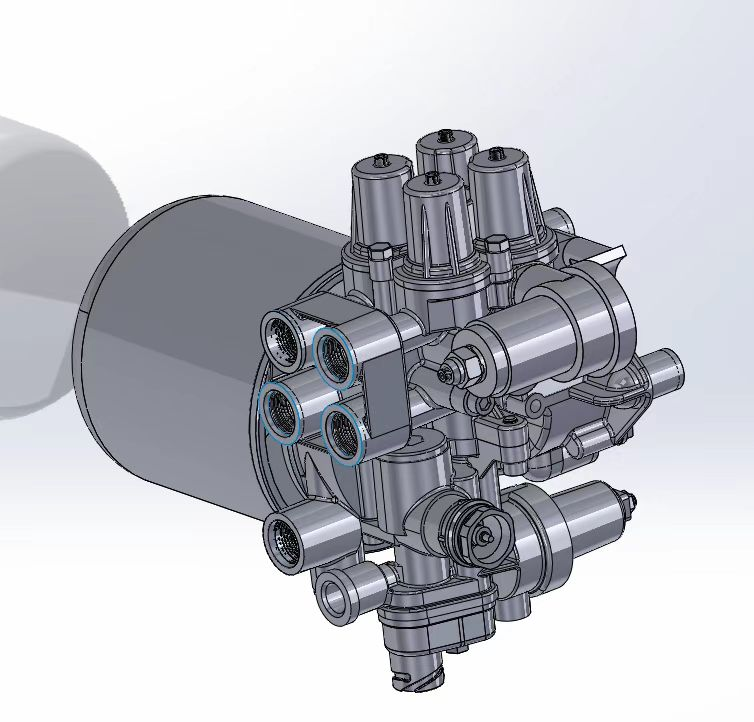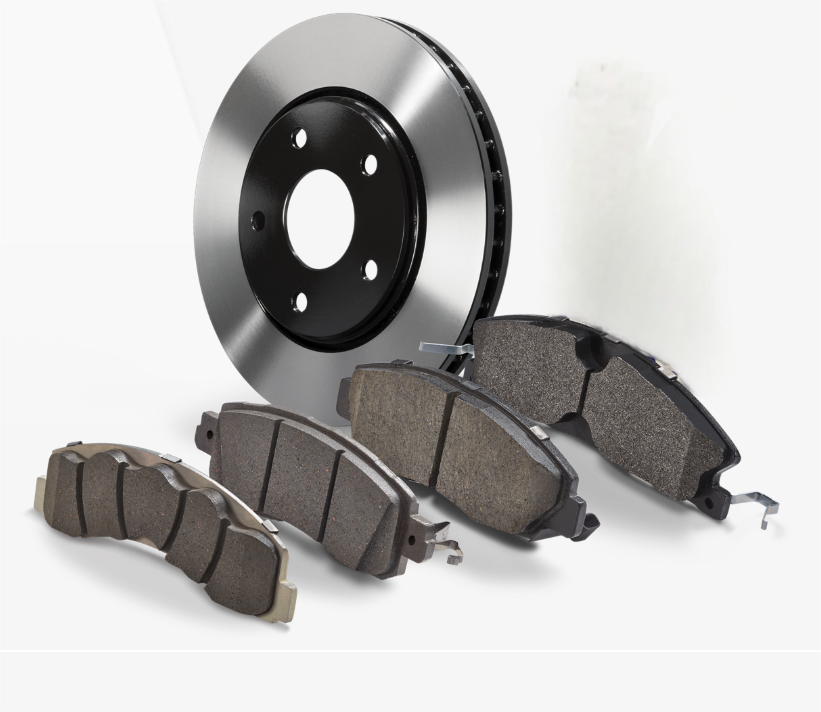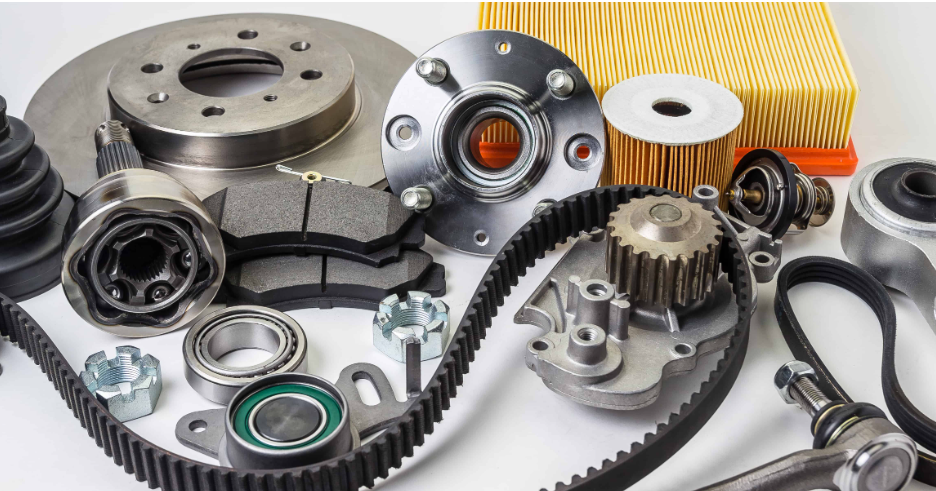The Science Behind Truck Brake Lining Thickness and Braking Performance
What Is Truck Brake Lining Thickness and Why It Matters
The thickness of truck brake lining shows how much friction material remains on those brake pads or shoes. When there's enough lining left, it creates proper friction against the rotors or drums when needed. Most brake linings tend to wear down somewhere between quarter to one and a half millimeters every ten thousand miles driven, though this can vary quite a bit based on what kind of roads someone is regularly driving on. Because of this gradual wear, checking brakes periodically becomes really important for keeping that stopping power intact and ensuring everyone stays safe on the road.
How Brake Lining Thickness Affects Friction, Heat Dissipation, and Stopping Power
A 2020 Materials Design study found that linings below 5 mm experience 18–32% faster heat buildup due to reduced thermal mass. At 3 mm, compression under pressure decreases contact area by up to 40%, impairing braking efficiency. This leads to:
- Longer stopping distances: 25-ton trucks require 12% more distance to stop when linings are at 4 mm compared to 8 mm
- Increased fade risk: Thin linings (≤4 mm) reach 600°F (316°C) 1.5 times faster during simulated mountain descents
- Material degradation: Worn linings show 54% higher friction coefficient decay under SAE J661 testing standards
Recommended Minimum Thickness Thresholds for Safe Operation
The Commercial Vehicle Safety Alliance (CVSA) sets the following minimums for roadside inspections:
| Brake Type | Minimum Thickness (Steer Axle) |
|---|---|
| Air Drum (Continuous) | 4.8 mm (3/16") |
| Air Disc | 3.2 mm (1/8") |
| Hydraulic | 1.6 mm (1/16") |
Fleets with high annual mileage (over 500,000 miles) often replace linings at 6–7 mm to prevent emergency downtime. Always measure thickness at three points using calibrated micrometers, as uneven wear is common in heavy-duty use.
Safety Implications of Worn Brake Linings in Commercial Vehicles
Reduced Braking Efficiency Under Heavy Loads Due to Thin Linings
Brake linings thinner than 4 mm simply aren't up to handling the intense heat and pressure generated when hauling heavy loads. According to research from the University of Michigan Transportation Research Institute, trucks carrying 40 tons had stopping distances 22 percent longer when equipped with 3 mm linings compared to those with 6 mm. The difference matters a lot in emergency situations where every second counts. Drivers face significantly higher chances of jackknifing or losing control altogether when their brakes can't respond properly under stress conditions.
Regulatory Standards and Out-of-Service Violations Related to Brake Wear
The CVSA mandates a 3.2 mm minimum for air-brake systems. According to 2025 Roadcheck inspection data, 9% of trucks fail due to brake wear violations. Fleets operating below standard face immediate out-of-service orders, with FMCSA reports indicating an average downtime cost of $8,500 per incident.
Case Studies: Brake Failures Linked to Insufficient Truck Brake Lining Thickness
A 2023 NHTSA investigation into three fatal crashes found all involved trucks had linings between 1.8–2.4 mm. Forensic analysis revealed brake fade occurred within 12 seconds of sustained highway-speed braking. In contrast, a 500-truck fleet trial showed that replacing linings at 4 mm–25% above the legal minimum–reduced hard-braking incidents by 63%.
Brake Lining Wear: Causes, Detection, and Maintenance Best Practices
Common causes of accelerated wear in commercial vehicle brake systems
Frequent downhill braking causes overheating, which can degrade up to 40% of lining material over time. Improper slack adjuster settings increase pad travel and friction, accelerating wear. Contamination from oil leaks or road debris reduces friction efficiency by 20–35%, forcing drivers to apply brakes more forcefully and further shortening lifespan.
Symptoms of advanced wear: Noise, pedal feel, and reduced response
When drivers hear grinding sounds coming from their brakes, it usually means around 85 percent of the brake lining is gone, leaving those metal backing plates exposed to the rotor surface. Another warning sign comes when the brake pedal feels soft or spongy underfoot, which can happen either because there's air trapped in the hydraulic system or simply because the brake pads have worn down so much they need about 30% extra pressure just to work properly. According to figures released by the Federal Motor Carrier Safety Administration back in 2022, vehicles with brake linings thinner than 6 millimeters actually take roughly 22 additional feet to stop completely at typical highway speeds. That kind of difference matters quite a bit on busy roads where every second counts.
Proper inspection and measurement techniques for truck brake linings
Technicians should:
- Measure thickness at three points using vernier calipers (minimum 5 mm recommended for proactive replacement)
- Inspect for heat cracks deeper than 1.6 mm across more than 10% of the surface
- Use machinist blue dye to assess drum-to-lining contact uniformity
- Replace linings in axle sets to maintain balanced braking forces
A 2023 CVSA audit found 27% of inspected trucks violated brake lining standards, highlighting the importance of quarterly inspections.
Innovations in Brake Technology and Predictive Maintenance Solutions
Real-time monitoring systems for truck brake lining thickness
IoT-enabled sensor arrays now allow continuous monitoring of truck brake lining wear during operation. These embedded devices detect millimeter-level changes in friction material and transmit data to fleet management platforms. Fleets using such systems report a 34% reduction in brake-related roadside inspections (Ponemon 2024), enabling timely replacements before failure.
Advanced friction materials that extend lining life and performance
Ceramic-reinforced composites offer 2–3 times the service life of traditional semi-metallic linings. They maintain consistent friction coefficients across extreme temperatures (–40°F to 1,200°F) and reduce brake dust emissions by 62% compared to 2020 industry benchmarks.
Telematics and predictive analytics in fleet brake maintenance
AI-driven platforms analyze over 47 operational variables—including brake frequency, load weight, and terrain—to forecast lining wear with 89% accuracy. A 2023 field trial demonstrated a 28% reduction in premature replacements when predictive analytics were integrated with automated maintenance scheduling.
Frequently Asked Questions
What is the ideal minimum thickness for truck brake linings?
The Commercial Vehicle Safety Alliance recommends minimum thicknesses varying from 1.6 mm for hydraulic brakes to 4.8 mm for air drum brakes. These ensure optimal braking performance and comply with safety regulations.
How often should brake linings be inspected?
It's advisable to inspect brake linings at least quarterly or more frequently if the vehicle operates under extreme conditions. Regular inspections ensure early detection of wear and potential issues.
What are the symptoms of worn brake linings?
Symptoms include grinding noises, a soft or spongy brake pedal feel, and increased stopping distances. These signs indicate that the brake lining may need replacement.
How do IoT systems improve truck brake maintenance?
IoT systems provide real-time monitoring of brake lining wear, allowing for timely maintenance before critical degradation occurs, thus reducing the risk of brake failure.
Table of Contents
- The Science Behind Truck Brake Lining Thickness and Braking Performance
- Safety Implications of Worn Brake Linings in Commercial Vehicles
- Brake Lining Wear: Causes, Detection, and Maintenance Best Practices
- Innovations in Brake Technology and Predictive Maintenance Solutions
- Frequently Asked Questions







